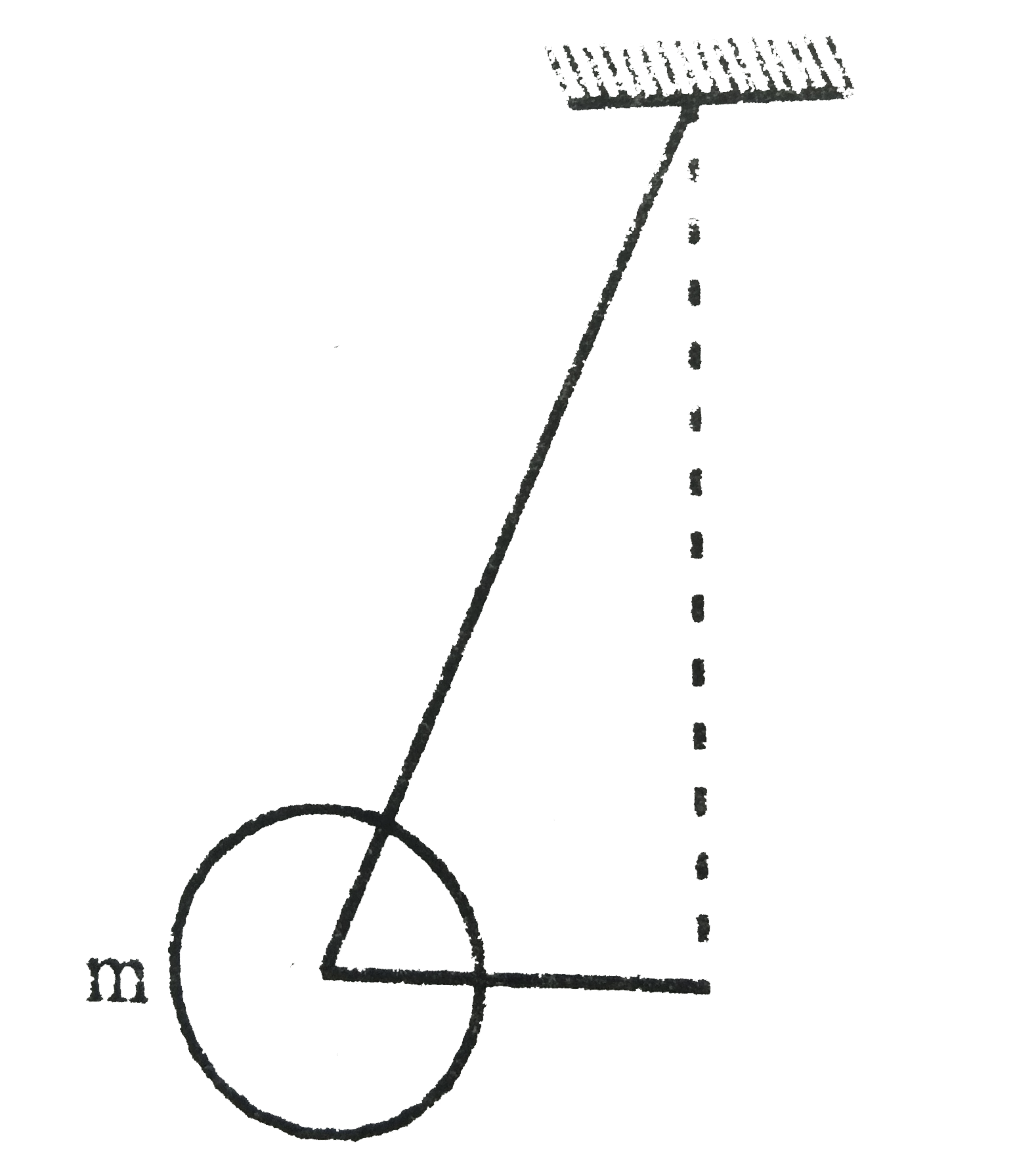A particle is moving with a uniform speed in a circular orbit of radius R in a central force inversely proportional to the nth power of R. If the period of rotation of the particle is T, then :Solution in Gujrati
(a)TαRn2+1
(b)TαR(n+1)/2
(c)TαRn/2
(d)TαR3/2for any n
The correct Answer is:B
Step by step video & image solution for A particle is moving with a uniform speed in a circular orbit of radius R in a central force inversely proportional to the n^(th) power of R. If the period of rotation of the particle is T, then : by Physics experts to help you in doubts & scoring excellent marks in Class 12 exams.
Updated on:21/07/2023Topper's Solved these Questions
- CIRCULAR MOTIONBOOK - ALLEN CHAPTER - CIRCULAR MOTIONEXERCISE - EXERCISE (J-A)
6 Videos
- CIRCULAR MOTIONBOOK - ALLEN CHAPTER - CIRCULAR MOTIONEXERCISE - EXERCISE(O-2)
7 Videos
- BASIC MATHSBOOK - ALLEN CHAPTER - BASIC MATHSEXERCISE - Question
1 Videos
- CURRENT ELECTRICITYBOOK - ALLEN CHAPTER - CURRENT ELECTRICITYEXERCISE - EX.II
66 Videos
Similar Questions
A ball of mass (m)0.5kg is attached to the end of a string having length (L)0.5m. The ball is rotated on a horizontal circular path about vertical axis. The maximum tension that the string can bear is 324N. The maximum possible value of angular velocity of ball (radian/s) is -
 .
.
View SolutionA ring of radius 'r' and mass per unit length 'm' rotates with an angular velocity 'ω' in free space then the tension is :
View SolutionFind dydx for the following :
(i) y=x7/2 (ii) y=x−3
(iii)y=x (iv) y=x5+x3+4x1/2+7
(v) y=5x4+6x3/2+9x (vi) y=ax2+bx+C
(Vii)y=3x^(5)-3x-1/x
View SolutionIn the Bohr's model of hy drogen atom, the electron moves around the nucleus in a circular orbit of radius 5×10−11m. Its time period is 1.5×10−16s. The current associated with the electron motion is:-
View SolutionA particle moves in a circular orbit under the action of a central attractive force inversely proportional to the distance r. The speed of the particle is
View SolutionSuppose the gravitational force varies inversely as the n^(th) power of distance. Then the time period of a planet in circular orbit of radius R around the sun will be proportional to-
View SolutionA particle is moving with a uniform speed in a circular orbit of radius R in a central force inversely proportional to the nth power of R. If the period of rotation of the particle is T, then :
View Solutionएक कण R त्रिज्या के एक वृताकार पथ पर किसी एक केंद्रीय बल जो की R की n वि घाट के व्योककृमानुपाती है, के अंतर्गत घूमता है । यदि कण का आवर्तकाल t हो, तो :
View SolutionA particle moves in a circular orbit under the action of a central attractive force which is inversely proportional to the distance 'r' . The speed of the particle is
View Solutionएक कण R त्रिज्या की वृत्ताकार कक्षा में एकसमान चाल से गतिशील है जिस पर कार्यरत अभिकेंद्र बल R की nवीं घात के व्युत्क्रमानुपाती है | यदि कण का आवर्तकाल T हो, तो -
View Solutionमान लीजिए गुरुत्वाकर्षण बल दूरी की nवीं घात के व्युत्क्रमानुपाती है । तब सूर्य की R त्रिज्या की वृत्तीय कक्षा में परिक्रमा करने वाले किसी ग्रह का आवर्तकाल अनुक्रमानुपाती होगा -
View SolutionA particle is moving with a uniform speed in a circular orbit of radius R in a central force inversely proportional to the n th power of R. If the period of rotation of the particle is T, then
View SolutionA particle executes circular motion under a central attractive force inversely proportional to distance R. The speed of the particle is
View SolutionA particle is moving with a uniform speed in a circular orbit of radius R in a central force inversely proportional to the n^(th) power of R. If the period of rotation of the particle is T, then :
View SolutionA particle is moving with uniform speed along the circumference of a circle of radius R under the action of a central fictitious force F which is inversely proportional to R3. its time period of revolution will be given by :
View SolutionA particle is moving with a uniform speed in a circular orbit of radius R in a central force inversely proportional to the n^(th) power of R. If the period of rotation of the particle is T, then :
View Solution
